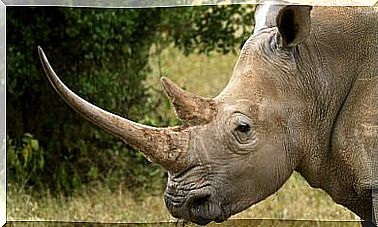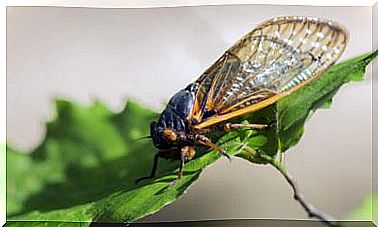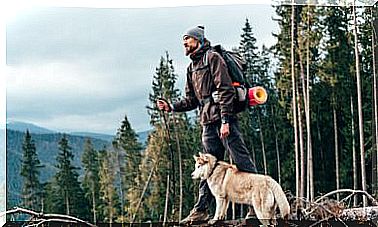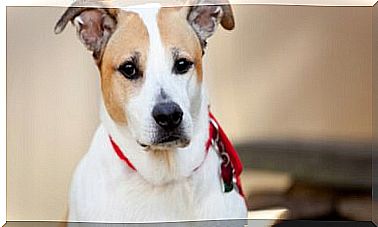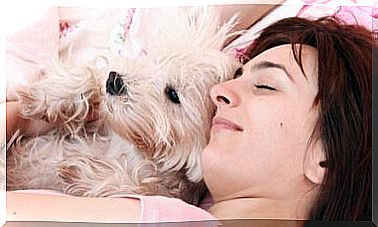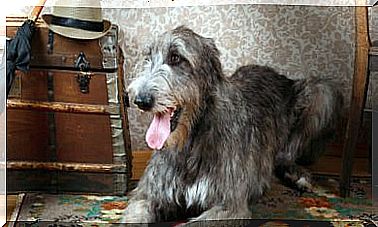Pendulum Fibromas In Dogs: Causes And Treatments
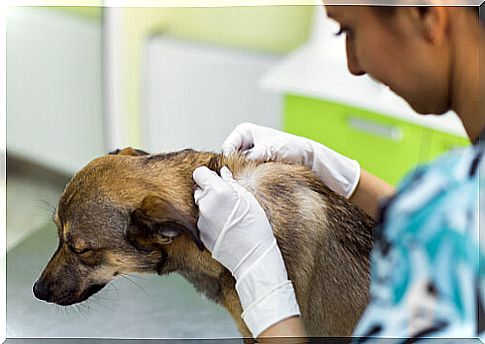
Pendulum fibromas in dogs are benign and relatively common tumors, particularly in older animals. Their name is due to the fact that they are made up of relatively mobile nodules that have a peduncle or stem by which they are attached to the tissues.
Characteristics of pendulum fibromas in dogs
Fibroids often appear as several well-defined nodules. They have a variable consistency and, as they are not attached to deep planes, they are relatively mobile. In these benign tumors, the overlying skin does not present hairs and neither does it usually present ulcerations.
The stem or peduncle is made up of loose connective tissue that contains blood vessels lined by a normal or thickened epidermis. In cases in which the pendulum fibroma suffers torsion of its pedicle, it is possible that the nodule becomes partially or total necrosis.

Causes of pendulum fibroids in dogs
The causes that induce tumor formation are unknown. It is obvious that the dog’s skin is continuously exposed to a wide variety of agents of a chemical nature and lesions of different origins. Aggressions to canine skin range from UV radiation to viral infections.
Additionally, other factors such as various hormonal abnormalities, and even various genetic factors, can also influence the appearance of tumors. So, as the years progress, accumulated damage to the skin increases the chances of a neoplastic growth.
It is not surprising then that the most common tumors in dogs are skin and subcutaneous tissues. In fact, these represent approximately one third of all tumors found in the canine species.
Diagnosing tumors in dogs
It is useful to understand that the skin is made up of different layers, so there is the possibility that each of them can develop tumors of different characteristics.
The tumors appear primarily as small lumps or bumps, but they can also have different appearances. Because skin tumors can be very diverse, identification and accurate diagnosis is a task that can only be performed by a veterinarian.
Distinguishing between a benign tumor and a cancerous tumor requires specialized knowledge and laboratory equipment. A veterinarian can perform a fine needle aspiration of cells or a biopsy – which removes a small amount of tissue from a tumor – for microscopic evaluation.

Treatment of pendulum fibroids in dogs
Fibroids – being benign – are not invasive, which means that they do not spread to other areas of the body and are easy to remove surgically. Unlike these types of tumors, those that are malignant can spread to surrounding tissue and spread to distant organs. Consequently, malignant tumors cause harm to the animal.
In general, for benign tumors that are not ulcerated and that do not impair the dog’s normal routine, treatment may not be necessary. This may be the wisest option, especially in older dogs. However, complete surgical removal is recommended if they change in appearance or become enlarged.
The appearance of fibroids according to the races
Fibroids occur in all breeds, but are primarily thought of as old dog tumors. Doberman, Pinscher, Boxer, and Golden Retriever breeds have a higher incidence of fibroids. In these breeds the head and legs are the most likely sites of appearance.
It is recommended to be aware of the appearance of any protruding lump on your dog’s skin. You must observe its shape, if it is a single nodule or there are several, if the skin that covers it is intact, whether or not it has hairs or if it has an ulcer.
